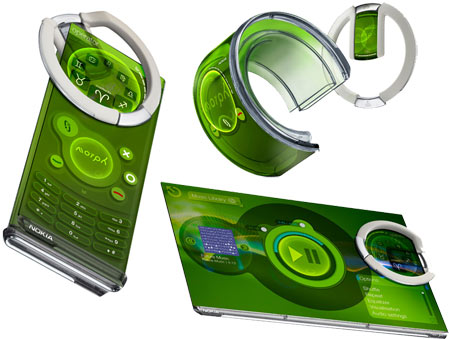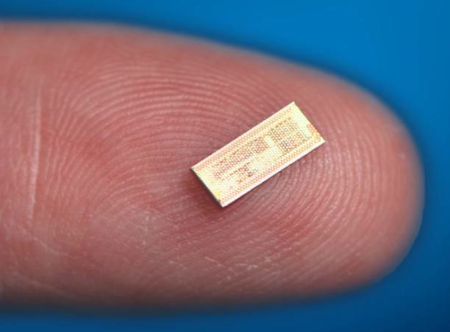What is nanotechnology? and what has it got to do with technology?
Did you see the G.I.Joe movies that came out last month?(oh so many question!).If you saw the film, you would have a hint of what nanotechnology is.

When you use some device at nano scale or you manufacture one at nanoscale, the technology used to do so is termed as nano technology.There must be a scale to classify materials or devices as nanoscale or nanotechnology materials right? yes there is.If the material or object is the range of 1 to 100 nanometers (nm), then it can be classified as a nanotechnology matetrial.If you divide one meter into one billion pieces, a single piece will constitute a nanoscale material.In scientific terms,1 nm is equal to one-billionth of a meter (.000000001 m).How small is 1 nm? well it is about 50,000 times smaller than the width of a human hair.

When did we discover nano particles/materials?
Nanoscience has boomed,only in the past one or two decade ago(I think), but the wonder of nanotechnology have existed for millions of years around us in nature.Did you know that a single strand of spider silk is 10 times stronger than a metal thread of same dimensions! why? due to nano crystals.Also you might have seen water floating on the leaves of a lotus, why? again, due to nano scale hairs on the leaf surface.There are many examples in nature for nanotechnology.It is also unique because many of the mechanisms of the biological and physical world operates on scales from 0.1 to 100 nm(like our immune system, the bacterias, the growth of cells, etc.,At these dimensions materials exhibit different physical properties.So scientists expect that many uses can be derived at the nanoscale.


There have been some developments and breakthrough in nanotechnology.Some commercial products are available that are aided by nanotechnology.Some examples are catalytic converters in automobiles that help remove air pollutants, the read write head of the hard disk, certain sunscreens and cosmetics that transparently block harmful radiation from the Sun,tooth pastes with nanoscale materials, paints that have nanotechnology touch in them to act as stronger protective coat.But what we have discovered or invented till now is very little.Some scientists have come up with applications of nanotechnology in electronics, some in medicine yet some in construction engineering and more departments of sciences are trying their hand on this new technology.Some of you might have heard this- scientists have successfully made a small working motor in nano scale, they have created objects out of carbon molecules like gears, tubes and circuits.


Studying some history about nanotechnology, I came to know that nanotechnology began being promoted as a great, unique technology in the late 1970s itself.In 1974 a Japanese scientist- Norio Taniguchi used the term nanotechnology for first first time,in a paper titled “On the Basic Concept of Nanotechnology.But there are claims that the term was also used by American engineer K. Eric Drexler in the book "Engines of Creation" which had a greater impact and helped accelerate the growth of the field.There is always controversy in history, since people want to claim the fame for themselves!.
Transmission Electron Microscope (TEM) ,Atomic Force Microscope (AFM) ,Scanning Tunneling Microscope (STM) .what are these? have you heard of these names before? they are the equipments used for manufacturing things at nanoscale or to modify things at nanoscale.Let's not go into the details of each, since the contain a lot of scientific content.(which is boring and has to be copied as it is sometimes)
That was a very brief introduction to the nanotechnology.But where is the part about nanotechnology and electronics?
Many of us own Nokia cell/mobile phones.Nokia is one of the leading commercial cell phone producer.There are other big contenders too in the market.But Nokia is putting in more money into Research and development hence you can see a very wide range of mobiles under the brand name.And one brain child of Nokia's R&D labs is a mobile phone, they call it Nokia Morph.Cool name isn't it?

They suggest that they can make a phone, that harnesses the power of nanotechnology, thus creating a new era of electronic products.Since nanotechnology allows us to create even transistors at nano scale, the possibilities of nanotechnology in electronics is endless.Using the feasibility and considering the production methods, the researchers have come up with a big list of features,that Nokia Morph may offer.
There was a exhibition called "The Museum of Modern Art “Design and The Elastic Mind” , Nokia morph concept was presented at that exhibition,and got the attention of people world wide.This concept phone, features some unique and intriguing possibilities in technology that are being explored by Nokia Research Center (NRC)-the R&D labs of Nokia.They are colaborating with the Cambridge Nanoscience Centre in UK.Together, they are exploring nanoscale technologies that will give to the world new and radical devices that can be a gateway to a new line of devices, never seen before.
Since it is a concept, there are only claims about the feature but no actual proof fo the technologies they offer.But it is believed that those features are not far from our reach.
Some of the features include flexible and transparent materials for the outer body of the phone, that can also act as entire display unit.Some intriguing features proposed are sensors placed on the surface, that can enable the device to detect things from the integrity of the food that you are about to consume to the visual detection of your face for security purposes.There is also a possibility of transparent electronics offering an entirely new aesthetic dimension.Scientists have also proposed power saving features like built-in solar absorption that might charge the device, also the batteries can become smaller, longer lasting and faster to charge.The Morph phone can become self-cleaning and self-preserving .i.e the nanotechnology will enable it to stay free from dust and even water!.Let us see these features mentioned above in more detail.

Nanotechnology also can be used to create self-cleaning surfaces over the device,as mentioned before, tightly packed nanoparticles could act as resistant to dust and moisture.This leads to the reduction of corrosion, wear and improving the life of the device.Nanostructured surfaces, which they call-Nanoflowers naturally repel water, dirt, and even fingerprints , this idea is borrowed from nature- like the surface of some leaves.
Nanotechnology enables materials and components that exhibit strange features like transparent, yet strong and flexible material.Fibril proteins as they call it ,are woven into threads, that helps support this thin elastic structures. This is similar to the spider silk we talked about earlier- flexible, transparent but strong.This can enable us to flex the device.Morph claims that a folded design would fit easily in a pocket and could ergonomically pose as a traditional handset.An unfolded larger design could display more detailed information, and can be used for functions such as having input devices such as keyboards and touch pads.

The device will also feature what is called nano grass , that will be capable of acting as alternative power source, harnessing solar power.Not only that, but using nanotechnology the batteries could become smaller and thinner but their capabilities increase.i.e. they can withstand more re-charging cycles, store more power and get charged up quickly.
Sensors can become more useful, nano scale sensors would enable us to sense real-time data about our surroundings or as simple as knowing if the fruit we are about to eat should be washed.Also visual sensors can capture image, verify faces and can also act as wall papers for your mobile phone outer design(see the video link for the details)
Nanotechnology doesn't only increase the advantage and features of a mobile phone, but Nokia claims the integrated electronics in the Morph concept could cost less and include more functionality in a much smaller space, hence the user interaction is enhanced.All of these new capabilities will unleash new applications and services that will allow us communicate with each other and interact with devices in new ways.
Is Nokia the only company exploring the depths of nanotechnology in electronics? definitely not! the computer electronics company, mainly known for it's processors - Intel have already started using their findings in nanotechnology.Do you have a Pc that contains a Core2duo processor? then you have been experiencing nanotechnology daily.Or if you have bought a new notebook Pc that contains Intel Atom, again you have been experiencing nanotechnology.If the question is how, the answer is the manufaturing process of the microprocessors.
Intel Atom:


These micro processors use what is called nanometer fabrication technique(which Intel calls with names like Nehelam, etc.,)the transistors that are used in the fabrication are in the size of 45nm, previous versions of Intel chips featured the 65nm fabrication technology.Since the size of the transistor is reduced, one can pack more number of transistors in smaller area, hence more computing power, less power consumption and less space needed.You might have seen the advertisement where people search for a chip that is so tiny, that it is not visible, well it is true.Imagine transistors being contained in a small chip of size .
Not only in the feild of electronics, nanotechnology is being applied, in other feilds of science also the possibilities and impacts of nanotechnology are being explored.The next revolution is believed to be the nenotechnology,so start researching about it.